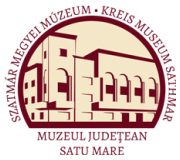Marta, Livius et al.: The Late Bronze Age Settlement of Nyíregyháza-Oros „Úr Csere” (Satu Mare, 2010)
VIII. Conclusions. Nyíregyháza-Oros site and its significance for the reearch of the Late Bronze Age
that the Hajdiibagos-Cehăluţ group continued to survive during the RBD period320, pre- Gáva type materials, dated to the second half of the RBD period and during the HA1 one, being present in some sites321. Chronology The quite numerous discoveries of metal and moulds should represent an important support for specifying the precise chronological coordinates that frame the evolution of the Late Bronze Age settlement „Úr-Cseré” of Nyíregyháza-Oros. To these discoveries we can add dating elements obtained based on the analysis of the pottery and the chronological correlations that can be made based on imports from the neighbouring cultural environments. Unfortunately, most of the metal pieces found during the research of the settlement of Oros, have a reduced chronological value, they being rather types whose evolution cannot be restricted to narrow chronological frames. Eventually, the fragmented mould for casting butted axes which is a testament to the production of such pieces in the settlement of Nyíregyháza-Oros is a possible issue of discussion. Most of the butted axes appear in the Upper Tisa area in deposits of the Uriu-Ópályi series, mostly as whole pieces, while in deposits of the Cincu-Suseni series they occur more rarely and are generally fragmented. This situation suggests that most pieces of this kind were produced in a period contemporary to the Uriu-Ópályi deposits, which were dated primarily during the RBD phase. However, we do not exclude the possibility that the deposition of deposits of this type continued during the beginning of the next period as well.322 The analysis of the ceramic material from Oros revealed that a large number of shapes and most of the decorations are encountered in almost all the sites of the Hajdiibagos- Cehăluţ culture, but also between the Berkesz-type findings. Even though a two phase evolution for the Hajdiibagos-Cehăluţ cultural group has been suggested, this discussion remained to date only in a theoretical stage, lacking any substantial elements to differentiate 320 Nagy 2005; Tóth-Marta 2005, p. 128; Nagy 2007; Bejinariu-Székely-Sana 2008. 321 Nagy 2005; Tóth-Marta 2005, p. 128; Nagy 2007; Bejinariu-Székely-Sana 2008. 322 Kacsó 2003, p. 277; Kacsó 2007, p. 37. Other opinions on the wider dating of the deposits of Uriu-Ópályi type - Gumă 1993, p. 262; Gogâltan 2001, p. 196. 65
